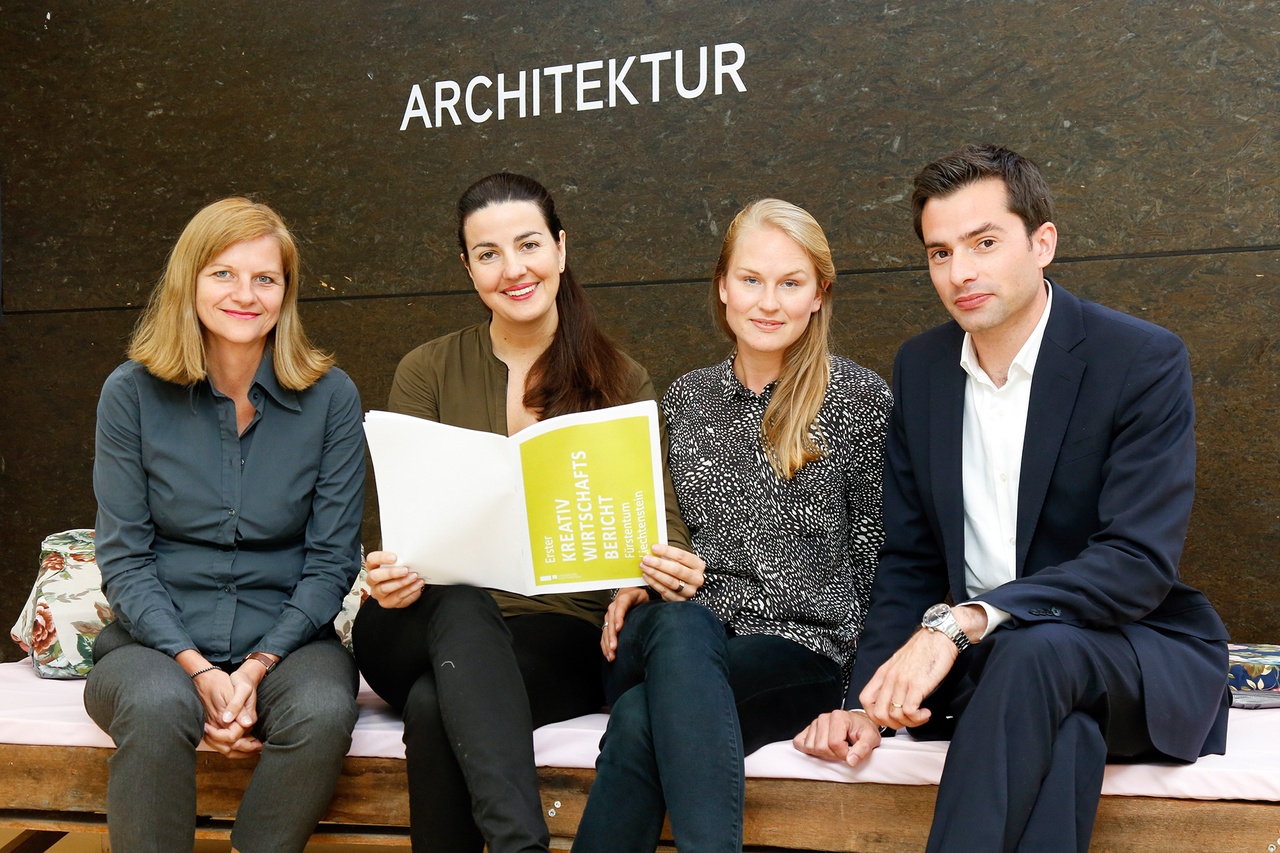The creative industry is increasingly coming to be seen as an important economic factor favouring the location where it flourishes. On the occasion of a media conference on Monday, 29 September 2014, a research team from the University of Liechtenstein has now presented the first ever Creative Industry Report for the Principality of Liechtenstein.
Creative activity provides impulses for the industry of a country – and creative industry is increasingly coming to be seen as an important economic factor favouring the location where it flourishes. On the occasion of a media conference on Monday, 29 September 2014, a research team from the University of Liechtenstein has now presented the first ever Creative Industry Report for the Principality of Liechtenstein.
The importance of creative industry, and the knowledge-based services associated with it, is increasing by leaps and bounds. All European reports have highlighted the way in which creative industry as a production factor is increasingly gaining in political and economic importance. In the last twenty years, in Europe and above all at classic industrial locations, a change of mindset has occurred. The creative industries have grown in recent times to become a bearer of hope for many cities and regions, and are regarded as an important growth market in their own right and as an engine of innovation for other sectors.

.
Creative industry as a significant industrial branch
Even if the Principality of Liechtenstein is for the most part viewed by foreign observers as a financial and industrial centre, there have been increasing deliberations in recent years on development strategies with a view to promoting an alternative image for the region. The cultural policy statement of the Liechtenstein government for the next ten years, for example, singles out creative industry as an important field of activity in cultural and political terms, capable of supplementing the financial services industry with increasing support from the cultural sector.
Against the background of these developments, the first ever Creative Industry Report for the principality has been created under the auspices of the PARK research project at the Institute for Architecture and Planning of the University of Liechtenstein. PARK investigates the potential of architectural activity as contributing added value to Liechtenstein’s creative industry. It receives support from Forschungsförderungsfonds Liechtenstein [the Liechtenstein Research Promotion Fund].

The First Creative Industry Report of the Principality of Liechtenstein, along with infographics and a white paper including results and recommendations, may be found online at www.uni.li/park.
A foundation for future developments
The research team of four spent 14 months assembling data and analysing it. The insights they arrived at demonstrate that the creative industries are not just restricted to urban areas – artistic and creative impulses can also be detected in rural regions.
‘Innovation processes rely on the interplay of different mindsets. In the light of this the creative industries have major potential for contributing to the innovative strength of companies and enhancing the competitiveness of the region,’ said Professor Peter A. Staub, head of the PARK research project and a professor at the Institute for Architecture and Planning.

The PARK team who presented the First Creative Industry Report of the Principality of Liechtenstein:
from left to right, Dr Ruth Jochum-Gasser, AA Certified Architect Celina Martinez-Cañavate, Vera Kaps Dip. Eng. and Professor Peter A. Staub
In a percentage comparison with the German-speaking metropolises of Vienna and Zurich, Liechtenstein makes a very good showing. ‘Based on the percentage of industry as a whole, the Principality of Liechtenstein has almost as many people working in the country’s creative sector (7%) as are to be found in Zurich (9%) and Vienna (8%). This contradicts the widespread view that creative activity is mainly restricted to the metropolis,’ said Dr Ruth Jochum-Gasser, a member of the PARK team and a researcher at the Institute for Entrepreneurship of the University of Liechtenstein, summing up the findings of the project.
‘After the design industry (27.4% of creative industry overall), the architecture market is the second biggest sub-market in this sector, with 15.3%,’ said AA Certified Architect Celina Martinez-Cañavate, principal researcher on the PARK team, illustrating the prominence of architecture in the country.
The First Liechtenstein Creative Industry Report is a first step in the direction of giving the country’s creative industry a visible profile and documenting its development in future reports aimed at the general public. The project also contributes to state-of-the-art international research on the creative industries, and should facilitate future partnerships and networking.

.
Presentation of results for the Liechtenstein general public
On Tuesday, 30 September 2014, from 6.00 pm, interested members of the public will have the opportunity of taking part in the public presentation of the Creative Industry Report for Liechtenstein. Under the auspices of the LIA lecture series on Architecture and Industry at the Engländerbau Art Gallery, AA Certified Architect Celina Martinez-Cañavate will be presenting the most important conclusions of the project on the future potential of architecture as a sub-market of the creative industry. The subsequent podium discussion will give the audience an opportunity of getting into dialogue with the research team and with other architectural experts.
‘Architektur und Wirtschaft’ [‘Architecture and Industry’]
A public lecture with discussion
Vaduz, Kunstraum Engländerbau [Engländerbau Art Gallery]
Tuesday, 30 September 2014, 6.00 pm
Further information at www.kunstraum.li.
